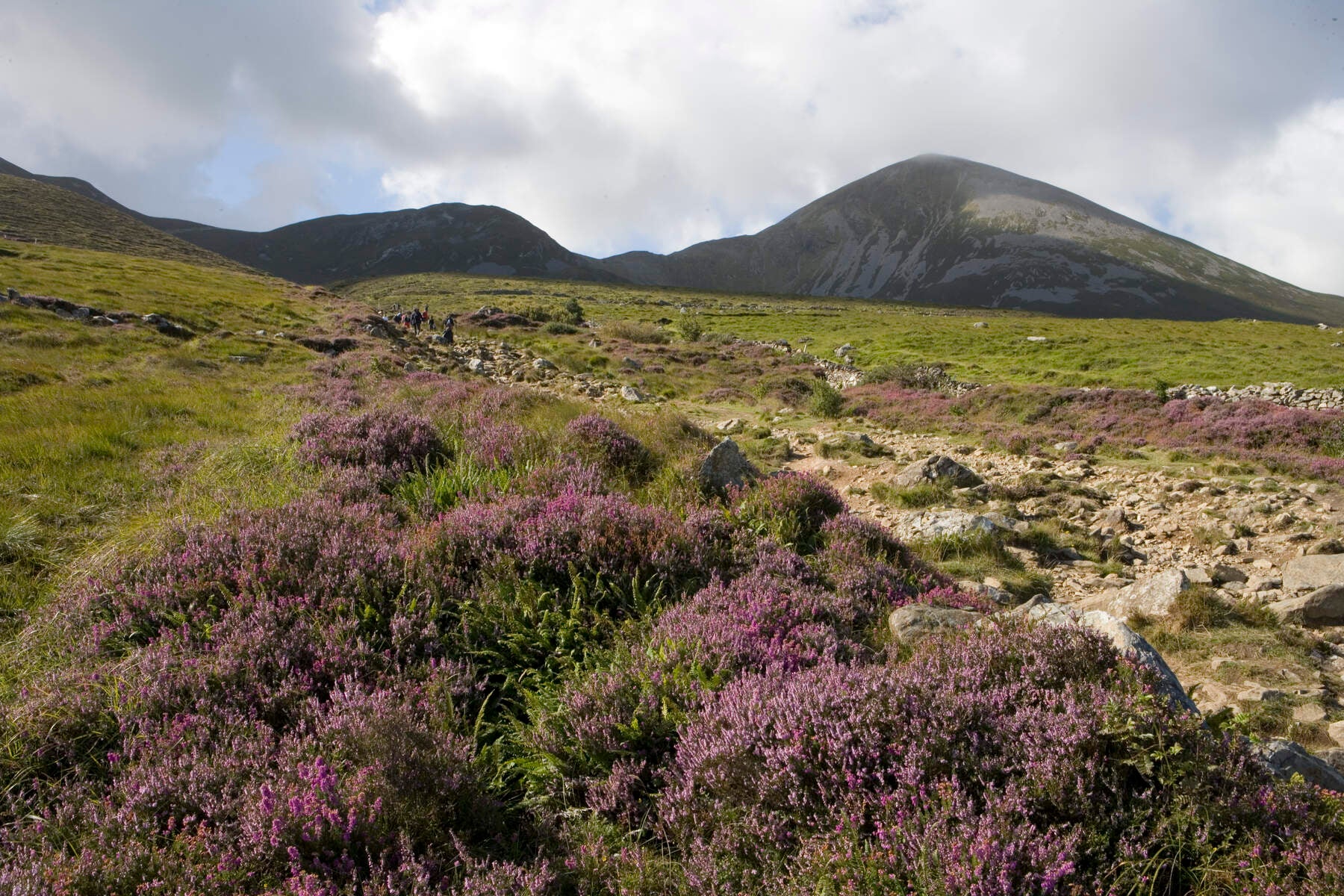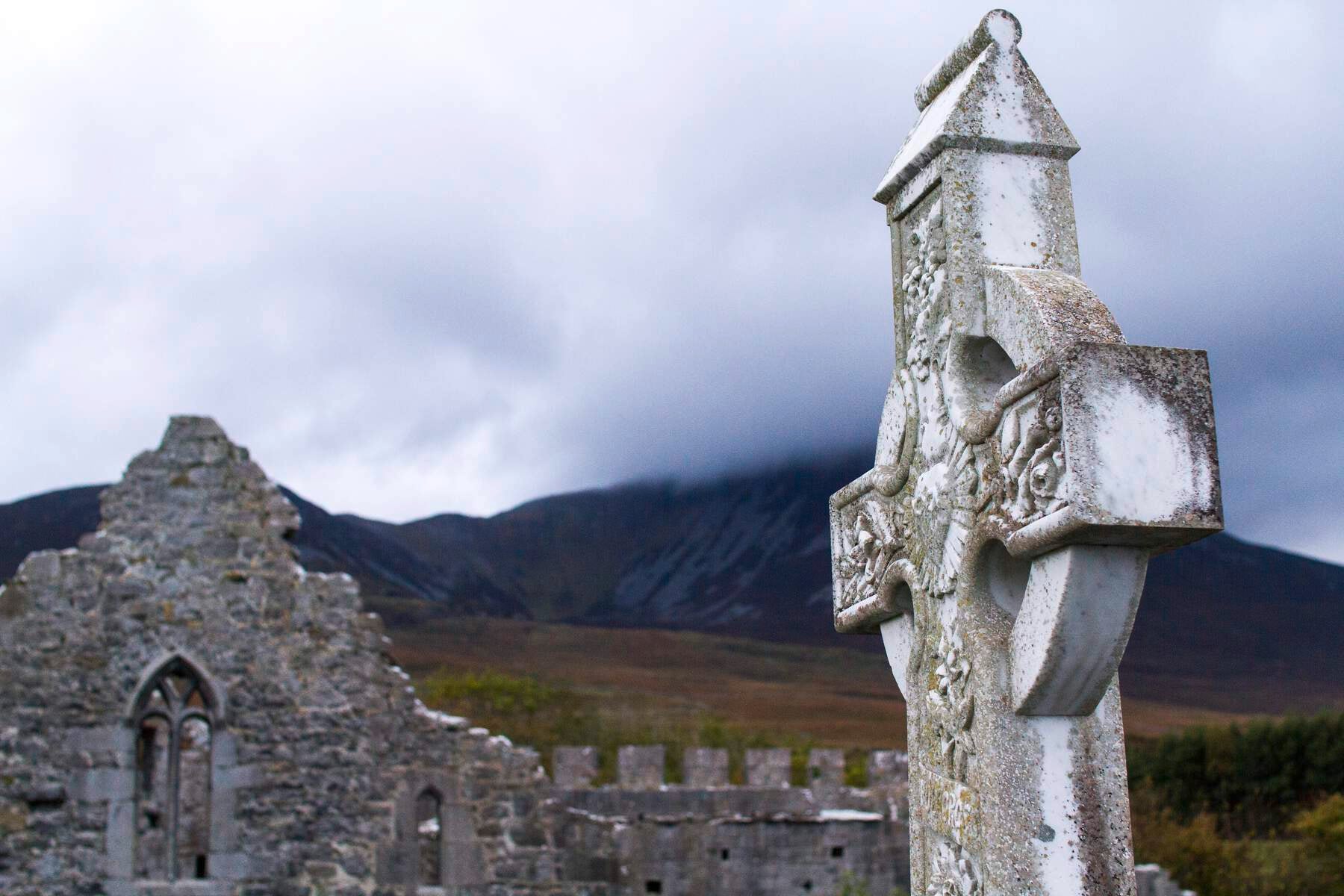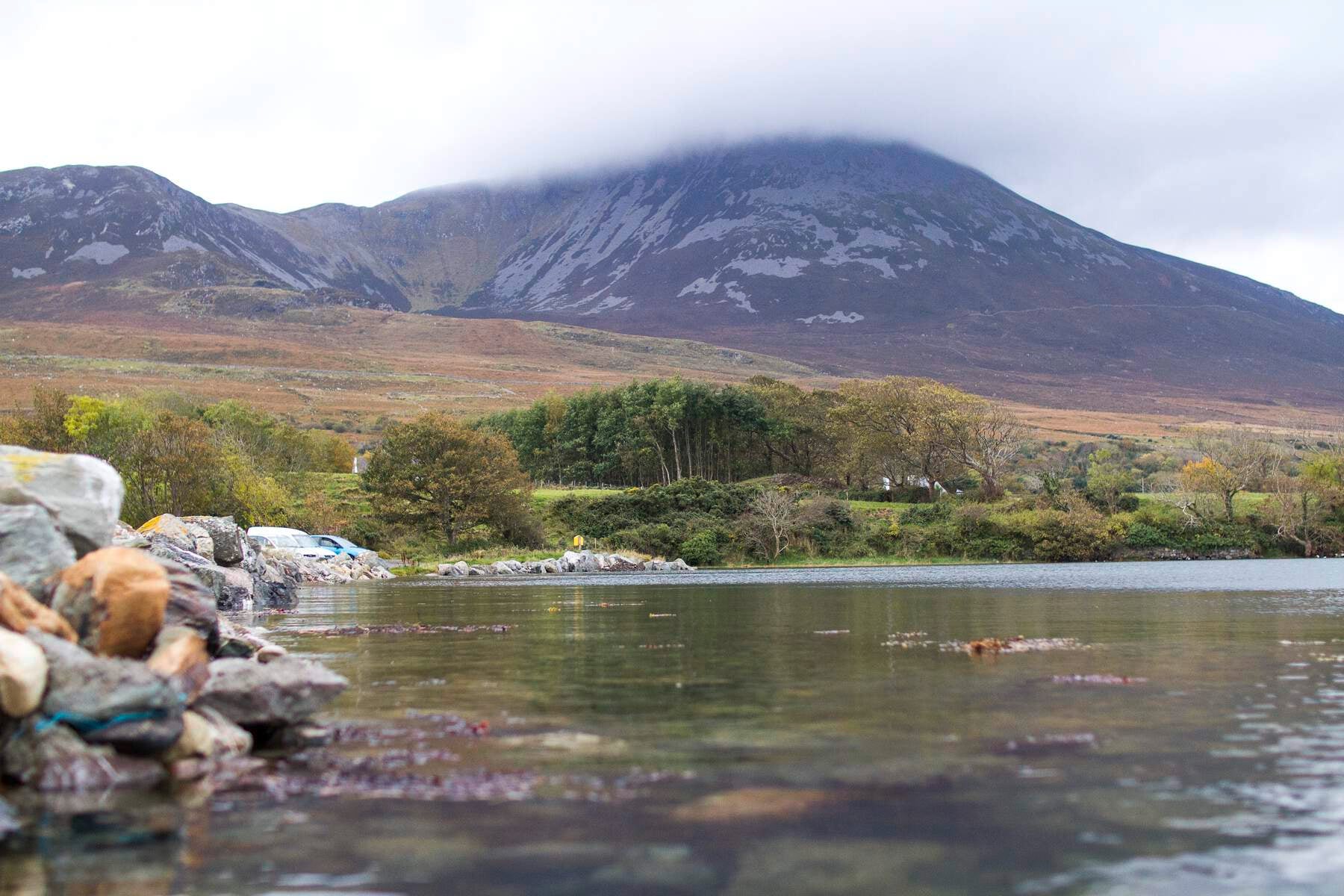A St Patrick’s Day climb up Croagh Patrick
While travel is still off-limits, David Atkinson reminisces about a St Patrick’s Day pilgrimage to remember in Ireland

St Patrick’s Day will look pretty different this year. The traditional street parades have been cancelled, the famous Irish craic will be streaming via YouTube and there’s currently a 5km travel limit in place across Ireland.
But Ged Dowling is still hoping to make his annual pilgrimage in the footsteps of the spiritual leader whose saint’s day we celebrate each year on 17 March. “If restrictions allow, I’ll hike up Croagh Patrick and take my own can of Guinness to crack open once I’m back down,” smiles Ged, who leads walking and stargazing tours along Ireland’s wild Atlantic coast.
Last year, I joined Ged to climb Croagh Patrick, the holy Irish mountain towering over County Mayo. I wanted to find out why some 120,000 people hike the treacherous trail to the summit each year, and to learn more about the man behind the folklore-shrouded myth of St Patrick with which it is so closely associated.
The truth, I discovered, would have many a pilgrim spluttering into their post-climb pint of the Black Stuff: Patrick was probably a Welshman. Historical records suggest he was taken to Ireland by a slave ship and sold to work as a pig farmer. He escaped to mainland Europe, trained as a missionary and returned to bring Christianity to Ireland in the fifth century. Legend suggests that Patrick went on to banish the snakes from Ireland, although this is probably more symbolic of him banishing long-held pagan beliefs.
Read more:
But it was the 40 days and 40 nights that Patrick spent on the summit of Croagh Patrick in 441AD – fasting, praying and communing with God in a lonely vigil – that marked out this formerly pagan peak as the new summit of Irish spirituality. Ever since, the annual Croagh Patrick pilgrimage for St Patrick’s Day has felt like walking in his holy footsteps.
Hit the trail
I set out on a misty late-winter morning from my base in Westport, a genteel west-coast town with its traditional high street shops and lively pubs, to meet Ged at the trailhead in the village of Murrisk. Climbing the mountain is typically a four-hour round trip in three increasingly strenuous stages, of which the first is a moderate climb along well-marked trails. We reached the ridge – a short, flat section – and took the path to Leacht Benain, a small, circular cairn of stones, which pilgrims traditionally walk round seven times while praying for forgiveness for their sins.

“People used to climb barefoot as a penance and I do still see the odd barefoot pilgrim,” said Ged, who can see the summit from his kitchen window. “Ironically, given the way the heavy footfall has eroded the paths, walking barefoot is probably now the most environmentally friendly way to climb.”
After a tough, one-hour climb, we finally reached the summit to find the views opening up in widescreen
However, the final, calf-burning yomp to the summit, known as The Cone, is enough to try the patience of a saint – the carpet of loose scree feels potentially lethal in the fine drizzle of an Atlantic coast morning. No wonder this is by far the busiest peak for Mountain Rescue Ireland. But, after a tough, one-hour climb, we finally reached the summit to find the views opening up in widescreen: the mountains of Connemara to the south and the 365 islands of Clew Bay, including Clare Island, birthplace of the 15th-century Irish folk heroine Gráinne O'Malley.

“Croagh Patrick was revered as a place of ancient spirituality long before Patrick was in town,” said Ged as we crouched on the steps of the white-stone summit church, which welcomes over 30,000 pilgrims for mass on Reek Sunday, the last Sunday in July. “But, to me,” he added, “it feels reassuring – like visiting an old friend.”
Return trip
I’d love to be climbing Croagh Patrick again this year, but my own spiritual journey will have to wait. I’m also looking forward to the post-climb pint of Guinness at Campbell’s Bar, a lost-in-time pub by the car park at the foot of the mountain, once the restrictions ease. In the meantime, I remain fascinated by the opposing beliefs that make this haven of spartan self-denial a place of spirituality both ancient and modern.

“The reverence is somewhat ironic given Patrick’s origins and the site as a place of pagan worship,” said Ged, who is planning new walking and stargazing tours of the region once lockdown lifts, drawing on the myths and legends of the west coast. “But, standing alone on the summit while the world is in chaos, I can still connect to the calm of its ancient spirituality.”
Travel essentials
Terra Firma Ireland offers Walk on the Wild Side day walks from €25 per person.
The live steam for St. Patrick’s Day will be hosted on the Discover Ireland YouTube channel and via Facebook.
Visit ireland.com
Join our commenting forum
Join thought-provoking conversations, follow other Independent readers and see their replies
0Comments